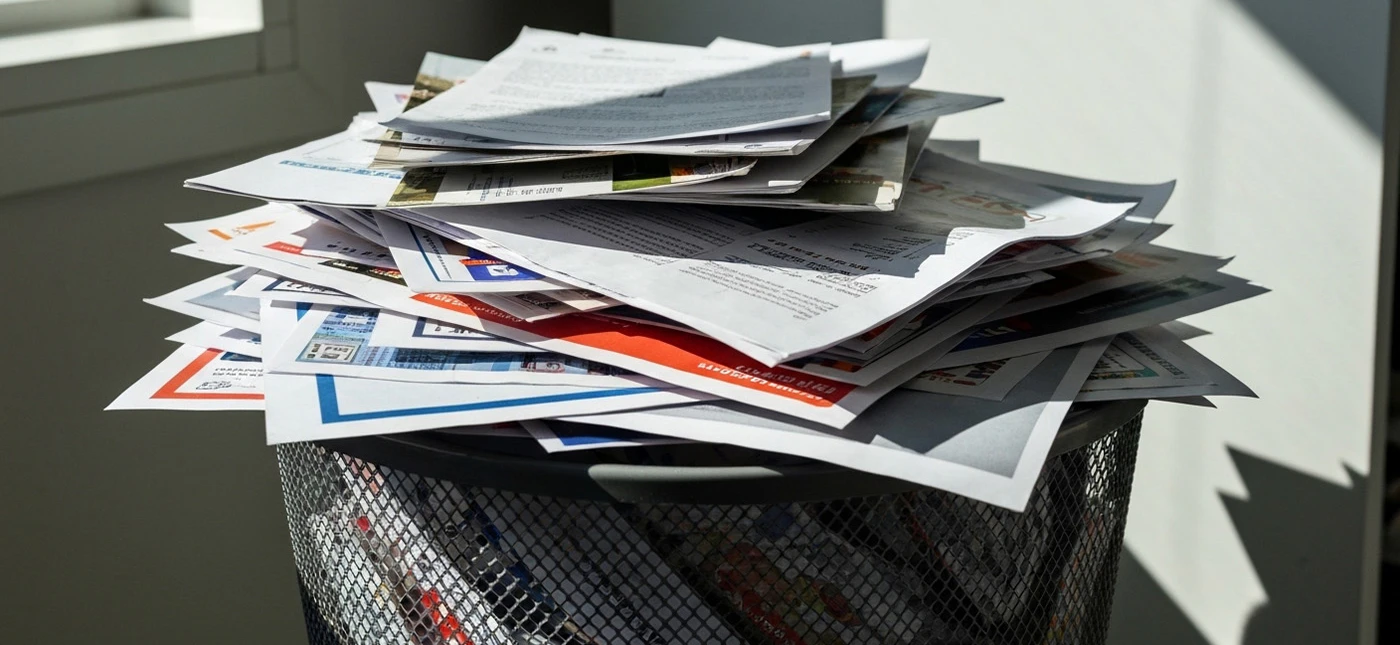Interview27th Oct 2024•4 minute read
Goodbye Paper, Hello Digital: A Successful Transition for Your Catalogs
The leaflet, that trusty companion of mailboxes, is nearing the end of its journey. But don’t worry! We spoke with Guillaume Pfeiffer, Head of Digital Planning & Optimization at WPP Media and a member of the “Catalog Digitalization” working group at Alliance Digitale, to explore the best strategies for transitioning your catalogs to digital formats.
Why Say Goodbye to the Leaflet?
Guillaume: The current climate is challenging for printed leaflets—technically referred to as unaddressed print. While 70% of French consumers still view leaflets as the best tool for maximizing their purchasing power, several factors are driving their decline:
Environmental concerns and legal regulations encourage us to reduce paper consumption.
Rising costs due to inflation have made paper and delivery more expensive.
Changing habits mean people are increasingly turning to online comparison tools and digital catalogs.
The challenge lies in offering solutions that align with these new behaviors while retaining the benefits of printed leaflets. For brands, leaflets have been an easy way to reach local audiences and promote their latest deals. Consumers also appreciate their convenience, especially during times of inflation when accessible promotions are in high demand.
In response to these challenges, digital has emerged as an essential alternative, offering advertisers numerous advantages:
Precise targeting to reach consumers most likely to engage with the offers.
Personalization to tailor messages and promotions to individual consumer profiles.
Real-time measurement and optimization to track campaign performance and adjust strategies on the fly.
Interactivity to create immersive experiences through interactive ad formats.
Cost efficiency by improving return on investment through targeted and optimized distribution.
How Can You Digitize Your Catalog?
Guillaume: There are several ways to bring your catalog into the digital age. The simplest option is to offer it as a PDF. However, specialized platforms like Bonial, Shopfully, or Promoaccro take things further. These platforms showcase nearby deals on their apps or websites, providing access to traditional page-turning catalogs or dynamic, theme-based catalogs generated from product feeds.
Some platforms, like Bonial, even enable off-site promotion of your deals through social media, Google, digital out-of-home (DOOH) advertising, or connected TV. Another approach is to integrate your promotions directly into ads on social media, display networks, email, or SMS campaigns. For instance, embedding promotions in social media ads allows for precise audience targeting and real-time tracking of campaign impact.
Paper vs. Digital: Which Performs Better?
Guillaume: Let’s be honest—digital-only solutions aren’t yet strong enough to stand alone. However, by carefully combining different channels, you can achieve a monthly reach of around six million internet users. Of course, this depends on the geographic coverage of your stores.
At WPP Media, we always emphasize that the goal isn’t to digitize your catalog just for the sake of it. The aim is to replicate the business impact and drive-to-store results you achieved with print. Simply converting your catalog into a digital format won’t cut it. Digital catalogs are often skimmed quickly and don’t provide the same comprehensive experience as their paper counterparts. That’s why it’s crucial to thoughtfully design your digital catalog and create a winning mix of promotional strategies, including digital catalogs, online ads, audio, displays, and SMS campaigns. For example, combining digital displays with mobile ads can effectively target consumers near your stores and encourage them to visit.
What’s the Perfect Recipe?
Guillaume: There’s no one-size-fits-all solution—it depends on the advertiser. The key is to test various approaches and measure their effectiveness. Tools like Adsquare and Kairos Fire, along with creative A/B testing, can support this process. One of the great advantages of digital is the ability to measure incremental impact, which helps us test and learn from our efforts.
It Sounds Complex—How Can Advertisers Manage This?
Guillaume: It’s true that this might seem overwhelming, but that’s where our team comes in. Our role is to guide advertisers through this transition and help them find the right combination of strategies for their brand. So, if you’re ready to say “Goodbye paper, hello digital,” don’t hesitate to reach out to us!

